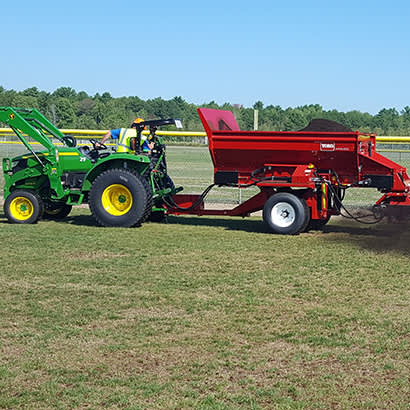
For an enhanced digital experience, read this story in the ezine.
As most of us know, we live in a different world than we did two years ago. The coronavirus (COVID-19) pandemic impacts the decisions we make on a daily basis, from sending our kids to school to when and if it’s safe to go out to restaurants, holiday gatherings or just getting together with a small group indoors. However, one space that has allowed people to gather has been park facilities, whether passive spaces or active spaces, such as athletic fields. More people utilizing the outdoors has put some strain on our facilities, thus creating more emphasis on preventive maintenance, especially on athletic fields. Now, more than ever, sports field managers are being asked to do more with less. Additionally, there is push from elected officials and community members to be more environmentally responsible when it comes to pesticide and fertilizer use.
City of South Portland, Maine, enacted a synthetic pesticide and synthetic fertilizer ban in 2016 and 2020, respectively, which eliminated the use of these products on public and private land with few exceptions. The emphasis from elected officials and concerned citizens was on aggressive cultural practices (e.g., aeration, overseeding, topdressing, organic fertilizers, etc.).
We as a department had to reassess how we maintained our 150-acre recreation facility, which includes 13 irrigated, heavily used athletic fields. As the sports field manager, I had two options: I could be angry and frustrated by thinking that elected officials and community members were telling a professional sports field manager how to do their job, or I could get on board and seize an opportunity to grow our operation. At the time, we had limited equipment in respect to size and efficiency, especially when it came to the turnaround time needed to properly apply cultural practices to an athletic field. I saw this as an opportunity to promote the right equipment needed, in order to utilize cultural practices on a more frequent basis to eliminate the use of pesticides. Regarding fertilizer usage, we switched to liquid organic fertilizer and introduced micronutrient packages. We secured funding of roughly $250,000 for capital equipment and an increase in our budget line items, such as seed, topdressing materials and micronutrients. With the addition of the new equipment, our turnaround time to aerate, remove cores, seed and topdress a 70,000-square-foot field went from three days to one or one-and-a-half days, depending on conditions. The acquisition of new equipment and resources enabled our crew of three to be more efficient due to the drop-in turnaround time. The application of liquid fertilizers and micronutrients added some time to the operation, but that is a trade-off that we can work with.
Given the concern around the country about green space management, at some point, it will be a topic in your community. My advice is to get ahead of it and be proactive. Even if you do not agree with all of it, if you show enthusiasm to embrace the challenge, you may be pleasantly surprised by the receptiveness of elected officials to get you and your department the equipment and resources you need to be successful. In the end, they want it to work.
Rick Perruzzi, CSFM, CPRP, is Recreation Manager of Outdoor Athletic Facilities at South Portland Department of Parks, Recreation and Waterfront.

